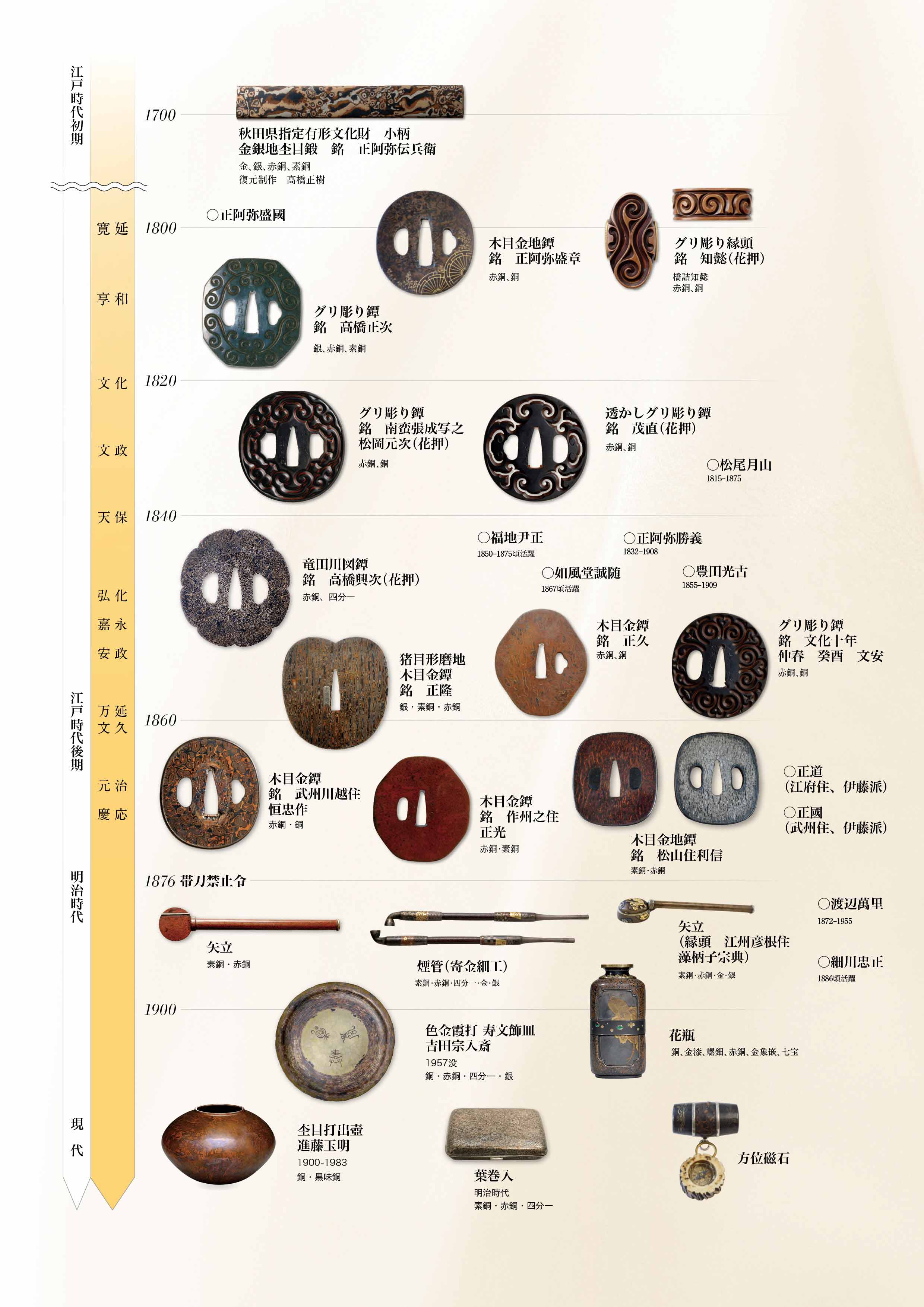
The History of Mokume Gane
Mokume Gane’s 400 Year History
The history of Mokume Gane traces back about 400 years, to the beginning of of the Edo period, when Shoami Denbei, of Dewa Akita, came up with the idea of making Guribori sword guards (ill.1). Guribori is a technique that consists of layering different colored metals and carving them into arabesque or spiral patterns. Although there is a theory that Ainu tribal patterns were an influence, the general consensus is that its origins lie with Guri Chinese lacquer.
What is Guribori? >
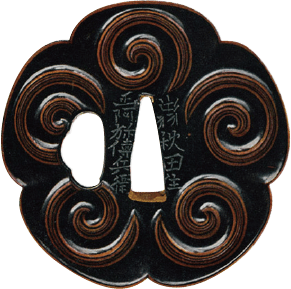
Guribori – The Precursor to Mokume Gane
Guri is a type of lacquer carving technique in
which multiple red, black, yellow and other colored
lacquers are layered and then carved down to form
arabesque and spiral patterns (ill.2).Imported into
Japan from the Muromachi period, images of such
items being treasured as tea ceremony implements
can be seen in tea ceremony records of the time.
Guribori is also known as the origin of Kamakura-
bori.
There are well-known pieces, such a inro cases,
from the latter part of the Edo period, made from
domestic lacquer believed to have the same origins,
which suggests that this type of pattern was already
widespread back then.
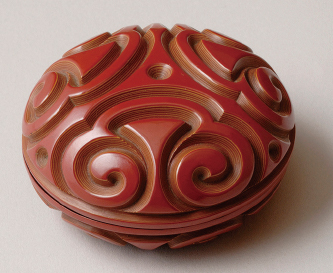
Founder Shoami Denbei of Dewa Akita
The oldest extant mokume gane work is a Kozuka
knife made by Shoami Denbei (ill.3). It is made with
a technique to replicate wood grain by combining
gold, silver, copper, and Shakudô, and isconsidered
rare in its displayed skill and elegance.
The real name of Shoami Denbei was Suzuki
Jukichi. After becoming apprenticed to Shoami in
Edo and gaining some experience, he returned to
Akita.
He then entered the service of the Satake Clan as a craftsman and produced many outstanding
sword fittings for them.
The years passed. From the middle of the Edo period, the Takahashi School carried on the
mokume gane and Guribori techniques learned from the Akao School.
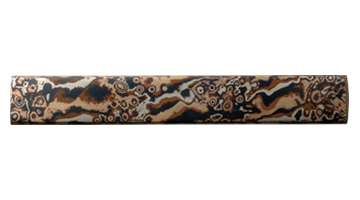
Handmade manufacturing methods passed down to enthusiasts
The Takahashi family’s story is told as follows: “The Akao family was known for producing
sword guards. The family’s founder, the samurai Zinzaemon Yoshitsugu was no exception.
Second to Zinzaemon was Kobei Yoshitsugu who moved to Edo and founded the Edo Akao
School. The third, Kobei Yoshitsugu, lived at the bottom of the Yushima Tenjin hill, as did
the fourth Kobei Yoshitsugu. The fifth, Hidesaburo Yoshitsugu, lived in Yotsuya, and the
sixth, Tashichi Yoshitsugu, lived in Nabemachi (Kanda). It was his pupil, Takahashi Ubei
Masatsugu, who established the Takahashi school.” From The Art of the Sword, No. 612, An
Introductory Class on Swords and Sword Fittings by Fukushi Shigeo.
In the “Kinko Tanki” document collected by Tanaka Ichigasai, the following is written as per
Illustration 4.
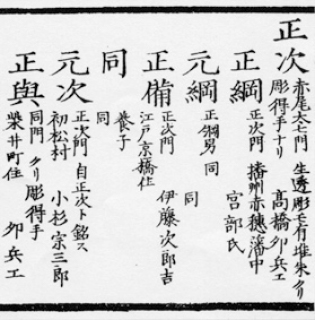
Phantom techniques for decorating Samurai swords
Takahashi Ubei Masatsugu (henceforth referred to
as Takahashi Masatsugu) is said to have been active
during the Bunka and Bunsei eras. He was particularly
known for his intricate and elegant Guribori.
It says in Kinko Tanki that “his forte was carving
red lacquer”. His outstanding Guribori works have
been handed down for posterity.
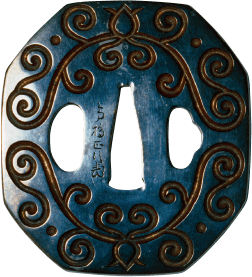
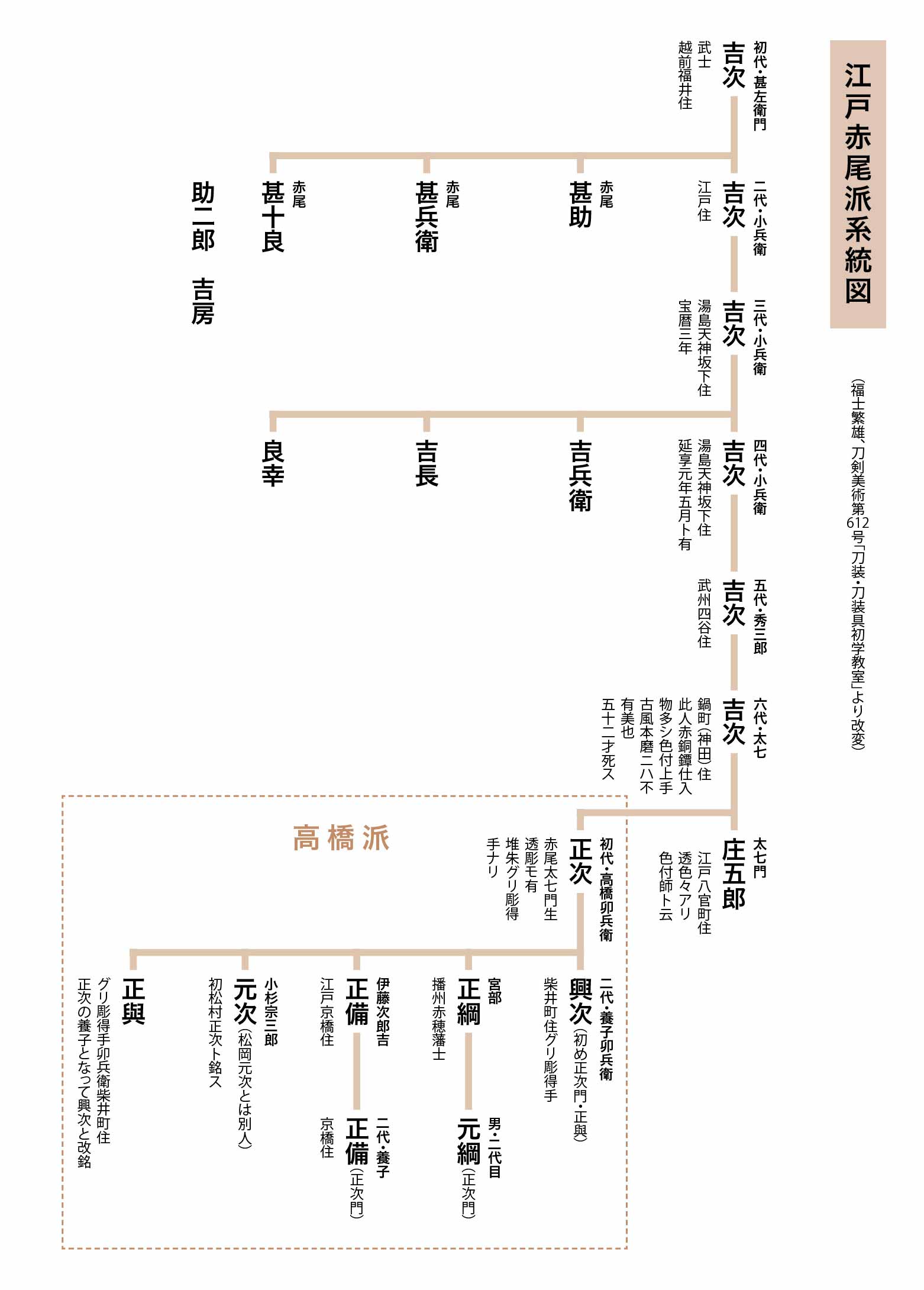
Culmination of Mokume Gane with Takahashi Okitsugu
The culmination of the technique came with Takahashi
Okitsugu. In his youth, he was known as Masaoki
but, after being adopted by Takahashi Masatsugu, he
changed his name to Takahashi Ubei Okitsugu (henceforth
referred to as Takahashi Okitsugu) and became
the second generation of the Takahashi School. His
specialty was mokume gane, and he produced a number
of very interesting works.
In particular, he went against the grain of the existing
mokume gane techniques and tried new techniques
in producing works such as the Yoshino River Tsuba
and the Tatsuta River Tsuba (5). It is often said that
Takahashi Okitsugu brought the mokume gane and
Guribori techniques to their highest levels.
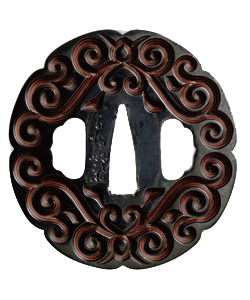
Blossoming of “Made in Edo” Mokume Gane
Shibaimachi (mentioned in “Kinko Tôki”) is the
area around modern-day Shimbashi, in Minato Ward,
Tokyo. This is the area where Takahashi Okitsugu is
believed to have been working diligently on his metal
work.
During the time that the Takahashi School was
active in the mid-to late Edo period, craftsmen such
as Matsuo Gassan, Matsuoka Motoji, and Fukuchi
Tadamasa were producing Guribori works.
Ultimately, the techniques of mokume gane and
Guribori went from being used only for sword fittings
to being used in utilitarian articles as well, such as
arrow holders and smoking pipes. Thus, they gradually
spread through Edo’s popular culture into current use.
Guribori also became widely used in accessories, such
as inro and tobacco holders.
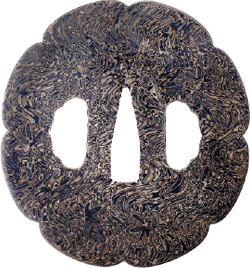
Modernization of the “Phantom Techniques”
The Haitôrei Edict, enacted in 1876, banned the wearing of swords in public. Swords and
sword fittings came to be considered as works of art, and many of the craftsmen who had been
in the employ of clans found themselves jobless. Against such a background, the transmission
of both mokume gane and Guribori techniques was interrupted for a time, and they eventually
came to be called the “phantom techniques.” But mokume gane was revived thanks to the
efforts of people who were deeply enthusiastic about the techniques.
At present, the techniques are, one by one, being unraveled thanks to the efforts of various
scholars. This motivation, just like the stacking of mokume gane patterns, has led to a revival
of mokume gane as a modern-day metal craft. The future is now looking much brighter for
mokume gane.
In addition, at present, jewelry is also produced by applying the technology of wood grain metal and replacing metal with noble metal such as silver, gold, platinum,
Some jewelry companies specialize in wood grain gold.
MOKUMEGANEYA
※Mokume Gane specialty jewelry brand: External site opens
